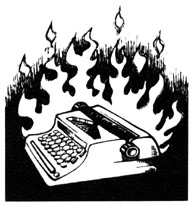Many of the initial news reports have attempted to normalize the curfew, presenting it as unusual but not unprecedented. Here's The New York Times of June 2, 2020:
The last time New York City was under curfew was in February 1945. Fiorello H. La Guardia was mayor. Franklin D. Roosevelt was president. The Allied forces had just bombed Dresden, Germany, and the United States was facing a coal shortage. The director of war mobilization imposed a nationwide midnight curfew on all “places of entertainment.” It lasted until May.
But let's be honest: what went on in 1945 wasn't a curfew. It was a law that forced nightclubs to turn off their lights at midnight. People were still allowed on the streets.
For here's the sad truth that no one seems to want to acknowledge: this is the first full-city curfew in New York City's history.
There was no curfew imposed on the city during the draft riots in 1863, when anti-black mobs killed 120 people. There was no curfew after Malcolm X was gunned down in 1965, no curfew after Martin Luther King was assassinated in 1968. The was no curfew during the 1977 blackout and no curfew after the Tompkins Square Park Riots in 1988, when Mayor Edward I Koch tried to close the park at one in the morning (yes: not so long ago, you could relax in the city's parks at night, but today we have a permanent curfew and it's a crime to be in any park after 1 am, according to parks department rules.) Significantly, Koch left the streets open and protestors were free to move around the streets all night long. Despite this, the pushback was so strong that the famously strong-willed Mayor rescinded his attempt to close the park the following day.
There was no curfew in 1991 after Rodney King was beaten in LA and no curfew that same year after seven-year-old Gavin Cato was killed by a car in the motorcade of the Lubavicher Rebbe, which led to three days of violent contention in Crown Heights. There was no curfew in 1999 after police killed Amadou Diallo in the Bronx, and none after Patrick Dorismond was shot for no reason by an undercover officer. There was no curfew after Sean Bell was blown away on his wedding day in 2006, no curfew in 2014 when the cops choked Eric Garner to death and shot Michael Brown on the street in Ferguson and Akai Gurley in a housing project stairwell.
In fact, in my search of newspaper and city archives, I could only find one time a curfew had been imposed in New York 77 years ago -- and it was partial, neighborhood-based, and very short: Mayor La Guardia shut Harlem down in August 1943 after a cop shot and injured a black member of the U.S. Armed Forces who intervened in an arrest on 126th Street. The street protests that burst out after that incident of police brutality left six people dead. Yet, even with the deaths, La Guardia tried to keep the curfew proportional. It began at 10:30 pm, impacted just one community, and lasted just two days.
The word curfew comes from the French -- covrir (to cover) feu (fire). And we've returned to that root today. Cuomo and de Blasio, who both claim to be progressive, have given the NYPD a handy tool to kick dirt on the fire of people's righteous and non-violent anger.



